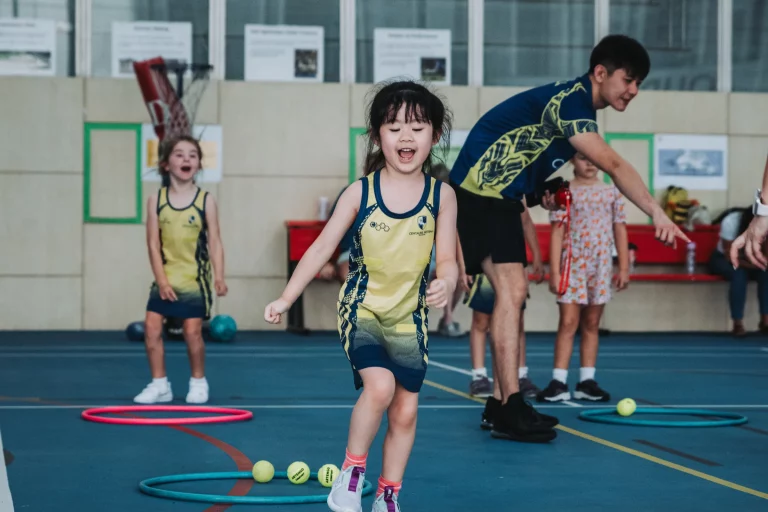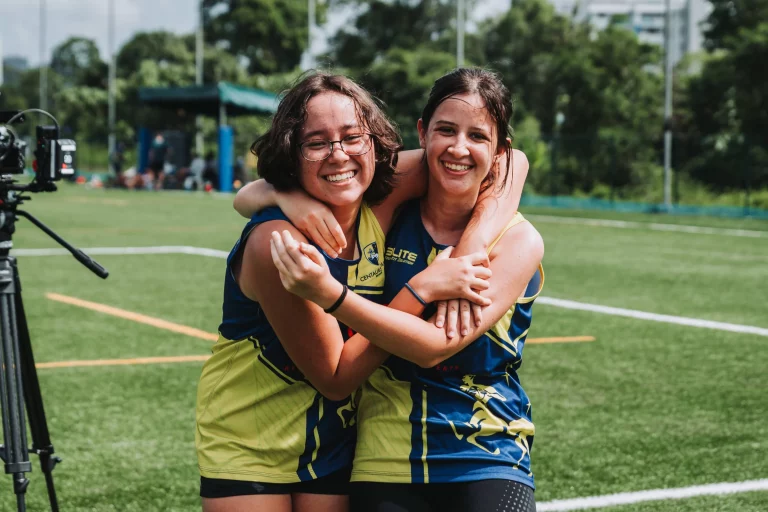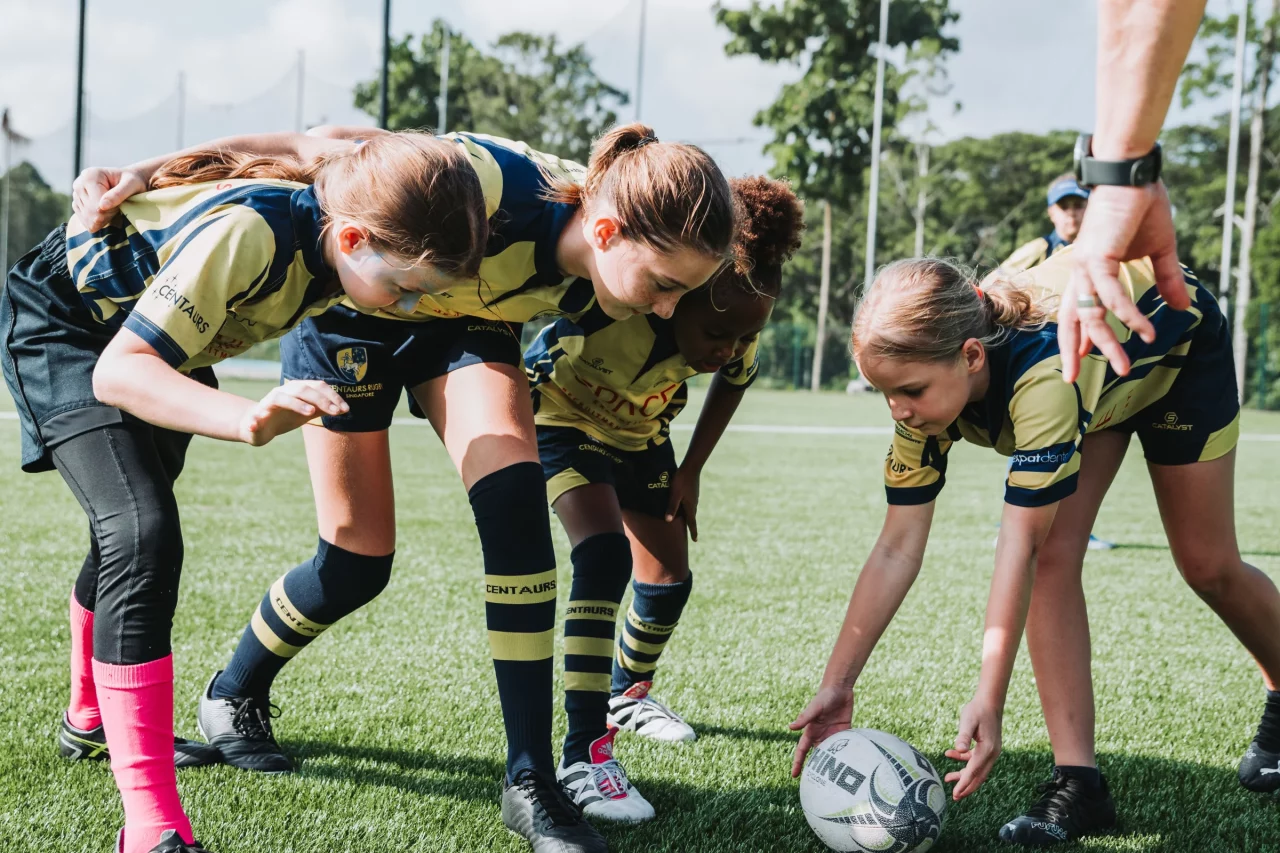Women’s sports have finally hit their stride! Female representation in elite sports teams will no doubt inspire girls to pick up sports (and maybe even see “professional athlete” as a potential career!). In the meantime, it’s our job to look at the barriers affecting girls’ inclusion in sport and see how we can overcome them.
Women’s Sport is Thriving (at the Elite Level)
2024’s Paris Olympics will be the first Olympics ever to have equal numbers of male and female athletes participating. The 2023 FIFA Women’s World Cup smashed records for game attendance and viewership. HSBC [Rugby] SVNS (the rebranded Rugby Sevens) will, for the first time in 2024, have mens and womens competitions at each stage of the series and and have equal time on the pitch. Deloitte forecasts that this year, women’s elite sports will generate more than $1 billion in revenue (for the first time), surpassing the industry’s 2021 evaluation by 300%!
Beyond this, female athletes are taking matters into their own hands regarding the terms of their contracts. Negotiations around equal pay and opportunity have made headlines frequently over the past few years – just taking soccer for example, there have been famous cases in Australia, USA, South Africa, and Wales. Elite netball players in Australia were negotiating for higher pay and came to an agreement with their governing body in December 2023. Irish Rugby’s female team started a trend of phasing out white shorts from their team uniforms, which has now been adopted by many teams around the world.
In short? A lot is changing quickly. We’re seeing phenomenal growth, professionalization, investment, commercialisation, and sponsorship at unprecedented levels and pace. We’re also seeing women in sports begin to set the terms of their work. This is amazing progress for women’s sports, and we expect to see this inspire girls’ inclusion in sports around the world. But what does this look like currently?
The Story of Girls' Sports at Grassroots Level
The elite sportswomen are inspirational for this next generation of girls in sport. The question for grassroots sports teams is how to convert admiration and spectatorship into taking action and playing the sport. Partly, it’s about understanding:
- what motivates someone to take up a sport in the first place
- what motivates someone to continue that sport (or to drop out)
and the data is showing that these motivations do differ for boys and girls. Studies have shown that, compared to boys and men, girls disproportionately feel unwelcome or uncomfortable in sport and are more likely to drop out of sport – even if they enjoy it or see it as a part of their identity!
Some statistics:
- Girls drop out of sports at two times the rate boys do at age 14
- Teen girls are less likely to participate in sports than boys (40% do not participate in sport compared to 25% of boys)
- Of the teens that play sports, only 29% of girls do two or more sports – but almost half of the boys play two or more sports
- 43% of girls in the UK who consider themselves “sporty” disengage from sport after
primary school - 43% of girls who enjoyed sport were side-lined and felt “not good enough” compared with 24% of boys surveyed
- 78% avoid sports when they’re in their period
- Less than a third of teenage girls feel supported in sports by their fathers, compared to half of boys
As Women in Sport put it, “Complex barriers and deep-rooted negative attitudes are affecting girls’ enjoyment of sport”. Feeling judged, lack of confidence, feeling unsafe, schoolwork, lack of interest, lack of opportunity, and a lack of support are all reasons why girls may drop out of sports13.
Why Does Female Inclusion In Sport Matter
We all know there are lifelong benefits for those who play sport and it’s important to build healthy habits early. Once girls drop out of sport, it’s much harder to pick it up again – so it’s important to keep making efforts to ensure that girls feel welcome and supported by the physical activities that they like to do, especially as they hit puberty (when we see the biggest drop off in girls sports participation).
The physical, mental, and emotional changes that accompany puberty can be boosted or offset by regular team sport – the endorphins, camaraderie, the sense of belonging – these are all wonderful benefits of sports girls who drop out of sport are missing out on.

What Can We Do To Keep More Girls In Sport?
Provide opportunities to explore and participate
Schools, CCAs and clubs can all provide opportunities for team sport. If your child is showing an interest in sport, allow them to take part in it and go in with an open mind! Exposure to all types of sports is highly encouraged for children for all facets of their development.
Go beyond what’s on offer in PE classes at school – if your daughter wants to try synchronised swimming but school doesn’t offer it… find somewhere that does! Change the narrative that certain sports are “girls sports” or “boy sports”. Challenge the idea that certain body types or sizes are unfeminine. This all starts with parents, coaches and teachers.
Inclusivity and safeguarding
Players love sports if they feel included and welcome. Belonging is a key factor in sports participation. We can expand the idea that sport is only for someone who “looks” sporty; we can be understanding of the needs of girls around their periods – whether that’s in the choice of uniform or allowing some players to take lighter training at certain points in their cycle. We can also decide to coach girls differently and give the girls a voice and choice in how they want to be coached. This is another important aspect of inclusivity.
Safeguarding too is uncompromisable, with girls’ happiness in sports being directly linked to their feelings of being comfortable and safe, free from fear or harassment. Find clubs or activities that champion inclusivity and safeguarding.
Female role models: the superstars who inspire
As mentioned above, female sportswomen are making waves in their fields! You can expose your daughters to their achievements, and encourage them to follow inspiring and positive role models in the news and on social media. Talk about what makes them inspirational and powerful.
Female role models with more impact: coaches who mentor
The Women in Sport study showed that girls want to be coached differently; they don’t want to be compared or judged. Confidence and not feeling “good enough” are major barriers for girls’ participation in sport. Professional coaches can tailor how they coach for different audiences, they can get the best out of an individual and a team. Seek coaches who want to put in the time to understand your daughter’s needs.
Look for clubs with women in charge, who take on leadership roles – those who walk the walk and talk the talk, in line with what you want for your daughter. Look for clubs who are talking about girl’s inclusion in sport and looking to make changes to overcome barriers

Translating the Success of Womens’ Sports Into Girls Sports
Elite female athletes are paving the way for the next generation and inspiring a new era of sports for women and girls. Challenging stereotypes, providing inspiration, tackling inequality, and calling out unwanted behaviour are all ways that these women are stepping up for our girls. Replicating this at the grassroots level means understanding localised, gendered barriers to sport and doing our best to overcome them – so that the path to achievement and inclusion is even clearer.


